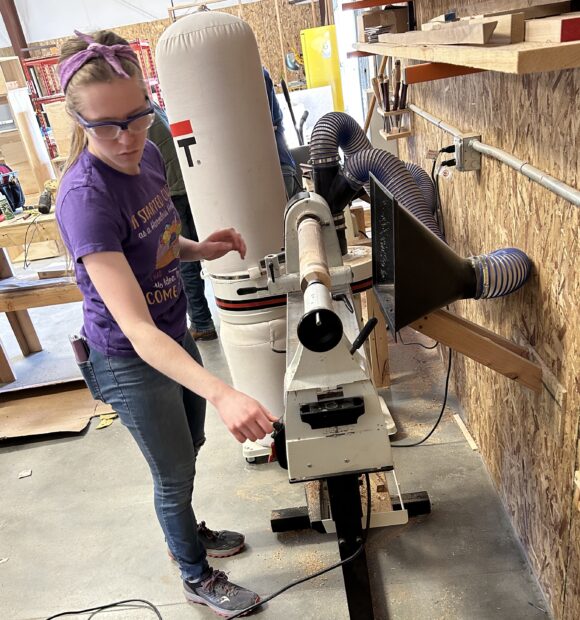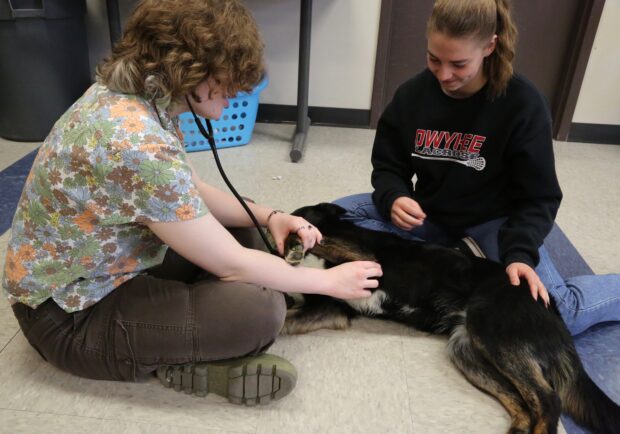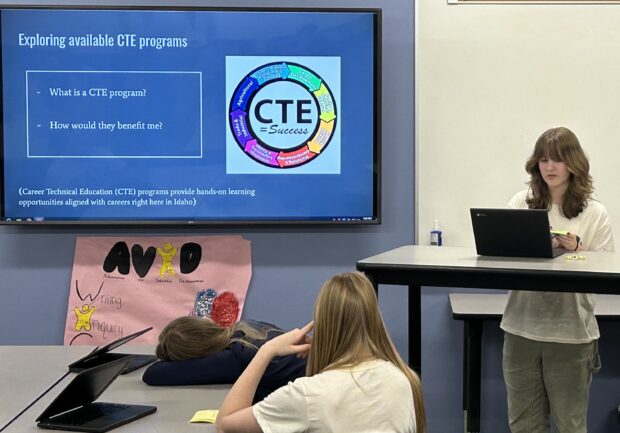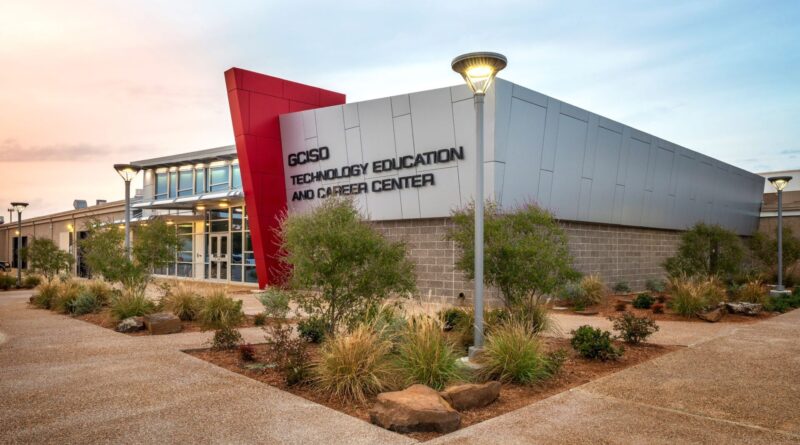Idaho Career Ready Program
High schools in every rural and remote corner of Idaho could have access to $45 million this fall, if their career technical programs are focused on in-demand jobs for their region and community. Idaho Career Ready Program.
“For a district that may have been wanting to offer a program but hasn’t been able to because of facility restrictions or equipment restrictions, this may be the opportunity for them to have an influx of dollars,” said Clay Long, administrator of Idaho Division of Career Technical Education (IDCTE).
The Idaho Career Ready program plans to start vetting grant applications by the end of the year. This new initiative is a priority of education superintendent Debbie Critchfield, who is focused on expanding career technical education programs with $45 million earmarked for rural Idaho.
The 11-member Idaho Career Ready Students Program Council decides which project applications get funded. The state expects to have council members — many of whom are appointees — in place before August.
“We want these programs to be successful and sustainable,” said Greg Wilson, chief of staff at the State Department of Education.
The legislation also calls for expanding CTE-related curriculum for seventh and eighth grade students. Middle schools are now required to provide a career exploration course that exposes students to hundreds of possible jobs, including CTE pathways available to them in high school.
The council represents industry, education and Legislature
The SDE said there is no limitation for the amount of grant funds each program can request. For example, the council could award $10,000 for an expansion or $10 million for a new facility.
“It’s really about their ability to access capital. This is the genesis of the $45 million,” Wilson said.
The state’s plan is to populate the program council with experience — leaders in industry, education and the Legislature.
The SDE is coordinating the council’s activities and Critchfield will serve as chairwoman.
The remaining 10 representatives are listed below.
- Idaho State Administrator for Career Technical Education Clay Long.
- One representative from the Workforce Development Council.
- Three industry representatives appointed by Gov. Brad Little.
- One representative of the House appointed by the Speaker.
- One representative of the Senate appointed by the President Pro Tem.
- Three CTE representatives from secondary and post-secondary education.
The council is tentatively scheduled to meet Aug. 1 in Boise. The SDE said the application process will be “nimble” and “flexible” so funds are dispersed quickly.
“Our funds will be available immediately. There is no waiting period. If it’s approved, the money will be sent,” Wilson said.
The state plans to start dispersing grant money by the end of the calendar year, according to the SDE.
Are more resources needed in rural or urban schools?
Currently, the state provides more programs in “rural defined areas” than in urban areas, Long said. There are 557 programs in rural schools, so 56% of their 955 programs are rural.
“CTE programs are prevalent all across the state of Idaho, even in the most rural areas. The challenge has become when you have smaller districts with smaller or less resources.”
With a finite number of students interested in CTE, small schools focus on just a few programs. So given that limitation, increasing the number of classes and pathways may not make fiscal sense.

There are six available pathways: agriculture, food and natural resources; business and marketing education; engineering and technology education; family and consumer sciences, and human services; health professions and public safety; and trades and industry.
Should the state provide more resources at a rural school that has, for example, fewer than 10 students enrolled in welding while a large school has 28 students on the nursing waiting list?
“I think it’s always the intent of all of our agencies within education to provide the most robust opportunities for students regardless of where they are,” Long said.
The SDE has a different opinion. “The idea is to level the playing field between the rural small districts and the large districts,” said Allison Duman, a K-12 workforce specialist.
Boundary School District partnering with local industry
The most sought-after CTE course currently offered at Bonners Ferry High School is family consumer science. “All high school students are motivated by food,” joked Andrea Fuentes, the district’s director of curriculum, instruction and assessment.
Boundary County School District is the epitome of rural and remote, just 30 minutes from the Canadian border yet nearly nine hours from the capital. It serves 1,400 children, with 419 attending high school.
The district offers coursework in five CTE pathways — in areas like agriculture and cabinetry. But there’s a need for increasing their foodservice and hospitality workforce.

The 8,660-square-foot Sturgeon Station Travel Center is scheduled to open this summer, and the school hopes to create apprenticeship training programs with the Kootenai Tribe, who own the facility.
They would like to use grant money to expand the school’s kitchen training facility; they also want to develop a daycare center for an early child development CTE pathway, and undergo shop expansions in welding, diesel mechanics and cabinetry facilities.
“All of these trades are in huge demand up here,” said Fuentes. “We are making sure we stay in those lanes and fill the need with employees.”
Meeting the career needs of rural communities
There is no project too small or too large, especially new innovative ideas or programs, according to the SDE.
In north Idaho, where timber is prevalent, the Idaho Forest Group is advocating for students trained to run a chainsaw and process lumber. There are now plans for 10 CTE programs to help students prepare to work in the field, Duman explained.
“The goal is making sure that we’re not just looking at statewide labor needs but we’re looking at regional labor needs,” Long added.
“It’s much broader than what we probably think of as logging, because you’re not just talking about folks actually harvesting, but it’s making sure that the plants or the trees and the timber are properly cared for,” he said.
The industry includes heavy equipment — like yarders, log loaders and harvesters — so you need operators and maintenance workers, as well as truck drivers to transport loads.
“The logging industry continues to have a need,” Long said.
Potential or current in-demand CTE careers are prevalent throughout the state but some are region specific: cybersecurity in eastern Idaho; food processing in the Magic Valley; forestry in north Idaho; healthcare, welding, millwright and construction all over Idaho.
“Let’s expose them to a lot of different things and then see what can pique their interest so we can hone in on and get more specialized training,” Long said.

Career exploration can spark interest in CTE courses
Middle school students are now required to take a career exploration course before they start high school.
In 2018, the IDCTE launched a pilot initiative First Steps: Understanding the World of Work through Career Technical Education to research best practices. Nine middle schools participated: Aberdeen, Fernwaters charter, Fremont, Jenifer, Jerome, Lake Hazel and Raft River.
To read more about what the state learned from the nine pilot schools, use this link.
At Lake Hazel Middle School, Tyler Garcia teaches a course called “Career Discovery 8” that incorporates the career exploration course standards. In addition to teaching, Garcia will serve next school year as West Ada’s middle school CTE consultant, providing teacher support and coordinating professional development.
“This is really my niche,” Garcia said. “I see the immediate benefit that it has for students. This is one of the most rewarding experiences that I have had as a teacher.”
Lake Hazel’s coursework is broken into three units: self exploration, career exploration and independence. Students assess their interests and personality traits; engage with guest speakers in the fields of STEM, education, government and finance; and create a final research project, focusing on a specific career.
Idaho Career Ready Program
A similar course is called “Career Explorations” at Fremont Middle School. There, it’s taught to sixth, seventh and eighth graders. And like Lake Hazel, the curriculum is based on state standards.
Nicholus May has been teaching the course for three years. “This exposes them to how much is really out there in the world of work,” he said.
An important component of the course is their virtual alignment with high school CTE. Students get a program introduction during visits to Kuna and Swan Falls high schools.
Eighth grader Lydia Perry, 13, said the Career Explorations course “helped me know more about my future and learn about what career I might want to do.”
She’s interested in either coaching or interior design.
The high schools have “really cool teachers, and a lot of (the CTE programs) look intriguing, like the medical room with mannequins, hospital beds and dental equipment,” Perry said.
Source: Idaho Career Ready Program https://www.techedmagazine.com/category/news-by-industry/
Rural schools set to receive millions for workforce-ready CTE programs

